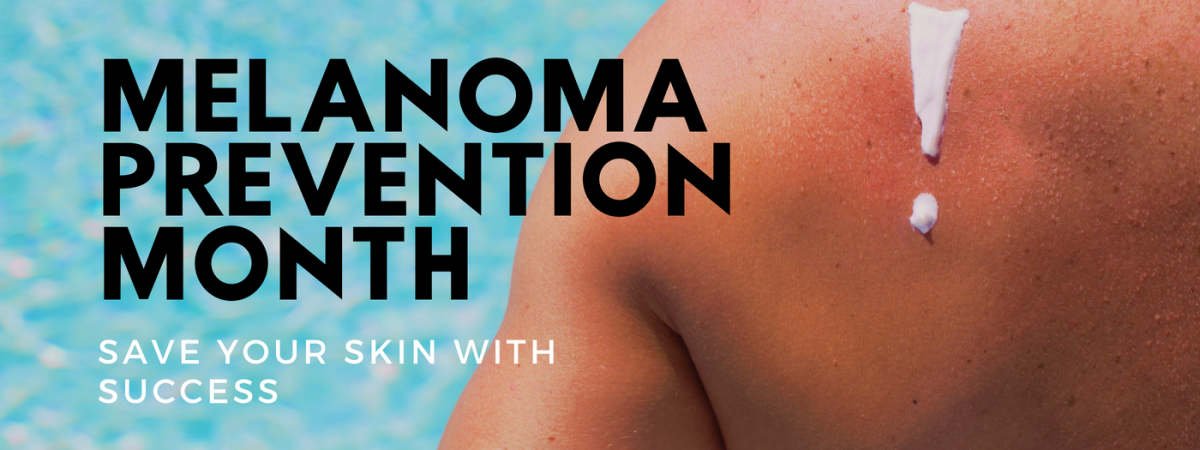
May is Melanoma Awareness Month, and there’s no better time to refresh your memory on how to reduce your risk for melanoma as the summer sun quickly approaches. We have a few tips to reduce your risk for melanoma. The good news is that melanoma prevention isn’t difficult!
First, are you at a risk for melanoma? People with these traits are at a higher risk for developing melanoma and other skin cancers:
- Fair skin
- Red/blonde hair
- Light eyes
- More than 50 moles
- History of sunburn or UV exposure
- Family/personal history of skin cancer
The major environmental contributor to melanoma is exposure to ultraviolet (UV) light. Melanoma is the deadliest form of skin cancer and one of the most common cancers diagnosed in the United States, but the good news is that when melanoma is caught early, it’s highly curable!
Use Sunscreen Every Day
UV radiation can still damage skin even in the winter and on cloudy days. Using sunscreen of at least 30 SPF everyday can prevent skin cancer. Older skin is less able to protect itself from skin cancer, but the good news is that sunscreen protects every skin type!
Wear Protective Clothing
Loose, lightweight long pants and long-sleeved shirts is the ideal sun protection for older adults. If you spend lots of time outdoors, be on the lookout for clothing designed for UV protection. Pair your clothes with a wide-brimmed hat and sunglasses to keep your whole body cared for! Be on the lookout for UV-blocking sunglasses, window shades, and car window tints.
Check Your Skin Every Month
Knowing your skin and examining it regularly is the best way to detect melanoma early. Look for the ABC’s of melanoma:
A – Asymmetrical look for moles or growths that are asymmetrical or uneven
B – Border does a mole or growth have an irregular border?
C – Color does the mole or growth have multiple colors?
D – Diameter is the diameter of the mole or growth larger than the size of a pencil eraser?
E- Evolved has the mole or growth gotten bigger in size or thickness?
Visit Your Dermatologist Yearly
In addition to self-exams, professional total-body exams are also your best chance of discovering skin cancer at an early and treatable stage. Make sure you tell your dermatologist about pain, irritation, itching, bleeding, or crusting at any skin site. Sun damage is cumulative, but dermatologists can also partially repair some aging, as it is usually sun damage
Know When to Stay Inside
The sun’s rays are strongest from 10 am to 4 pm., and it’s recommended to stay inside or in a shaded area during these hours. However, protecting yourself from sun damage doesn’t mean you can never go outside! Use a sun shade or umbrella or stick to the shade if you’re enjoying the great outdoors.
Do you have melanoma prevention questions? Check our Cure Melanoma for answers!
http://www.curemelanoma.org/about-melanoma/prevention/reduce-your-risks/
Written by SBS Marketing Intern: Marielle Medina